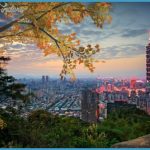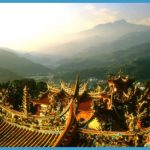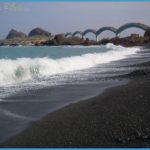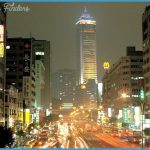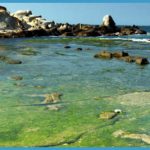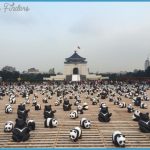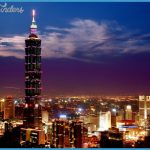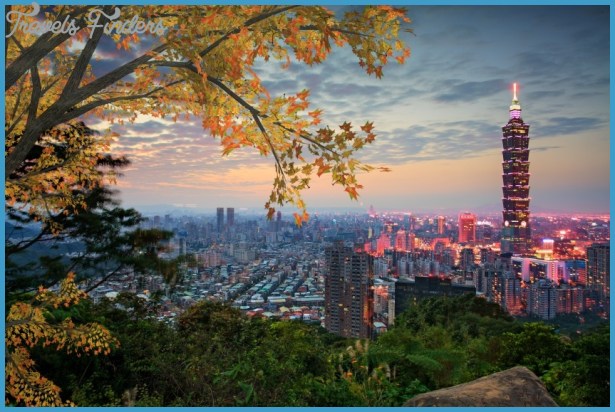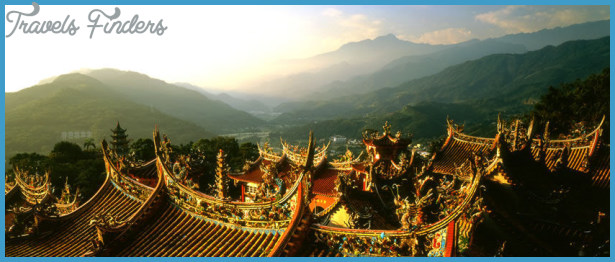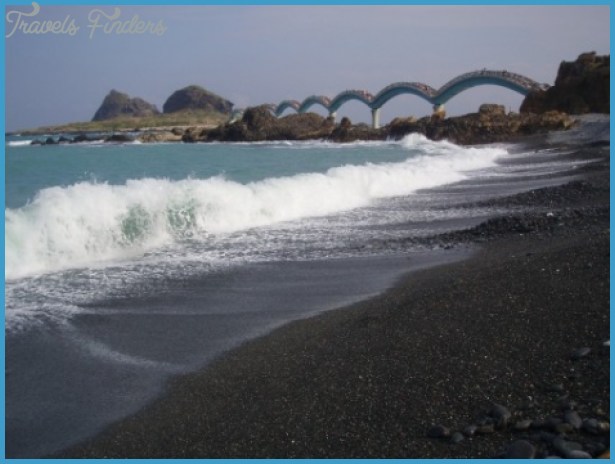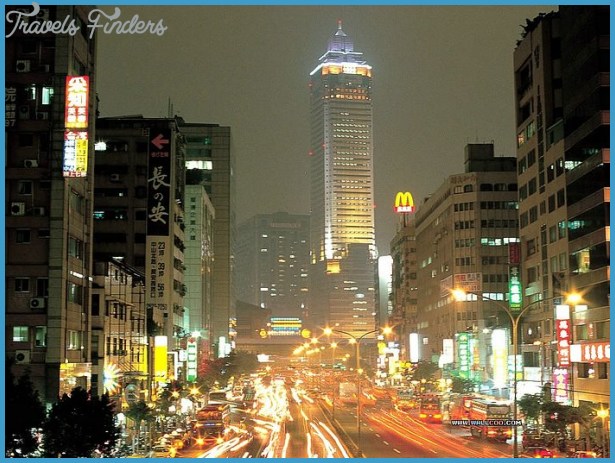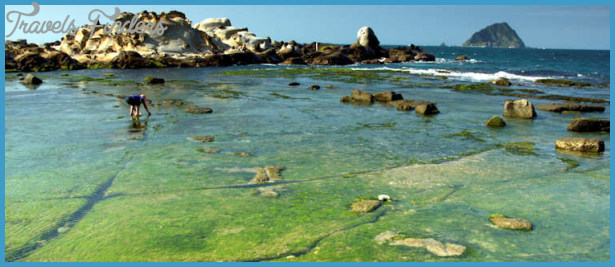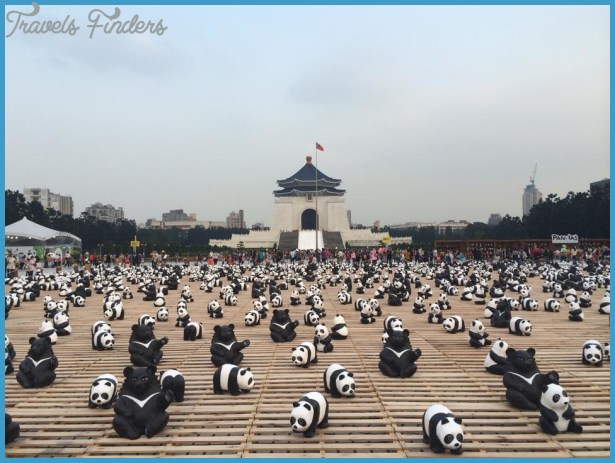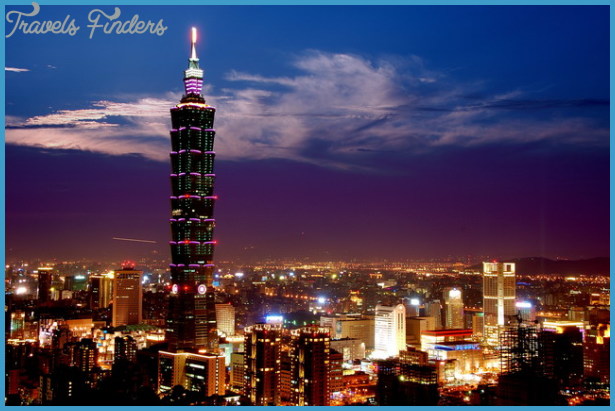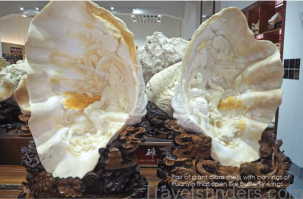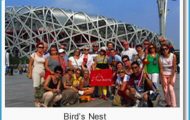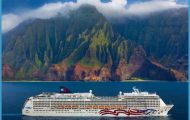In Sanshia, 22km/13% miles south-west of Taipei, the Tsu Shih Temple which was destroyed during the Second World War is being rebuilt. Visitors can watch the artists and sculptors at work.
About 30km/19 miles north-east of Taipei lies Taiwan’s second largest sea-port, Keelung (Chilung; pop. 354,000). It is situated on the East China Sea and a number of arterial roads terminate here.
The town can look back on a very eventful history. The Spaniards occupied it in 1626 and named it “Santisima Trinidad” (Blessed Trinity). Later the Dutch settled here until they in turn were driven out by Cheng Cheng-kung (Koxinga) in 1661. A disastrous earthquake destroyed the town in 1867. In 1884 French marines were stationed here for a time. Eleven years later a Japanese expeditionary force gained control of this strategically important town.
Known as “Rain Harbour” because of its extremely wet climate (up to 3000mm/120in. of rain falls in the course of 200 days), the main item of interest to visitors is the 22-55m/73ft high statue of Kuan Yi (Goddess of Mercy), which stands on a base of black marble and towers over the harbour.
10km/6 miles north-east of Keelung lies Yehliu National Park, with its bizarre rock formations jutting out sheer into the sea. Adjoining it is an Oceanarium with dolphins.
There are a number of good fish-restaurants in the fishing village of Yeliu.
The beautiful bathing beaches of Chinsan lie 6km/4 miles north of Yehliu.
The seaside resort of Fulung, 52km/32 miles east of Taipei near a most delightful peninsula protruding far into the Pacific Ocean, also offers excellent bathing beaches.
The resort of Wulai, 35km/22 miles south of Taipei, offers plenty in the way of leisure facilities. An excursion train runs from here to an Ataya village (the original native inhabitants of the island), who still perform their traditional songs and dances and wear the old forms of dress.
50km/31 miles south-west of Taipei, near Lungtau, visitors can view the “Window on China”, a “city in miniature” with several dozen models of famous Chinese buildings constructed to a scale of 1:25; these include the Imperial Palace in Beijing and the Great Wall of China.
A holiday resort has been built around the Shihmen (Gate of Stone) reservoir with its impressive dam, which is situated 55km/34 miles south-west of Taipei.
On the way there the visitor will pass by the peaceful Tzuhu Lake, which has a special significance for the Chinese apart from being just a leisure spot. In a mausoleum (wear respectable clothes) can be seen the glossy blacktomb of President Chiang Kai-shek (see Famous People), who died in 1975. Tzuhu, where he used to come to meditate, is regarded by many Taiwanese as being merely his temporary resting-place; their intention is that when the Chinese Nationals finally take over the mainland once more he will be able to lie at peace for ever in Nanjing (Nanking), the Kuomintang capital.
110km/68 miles south-west of Taipei and to the south of the town of Hsinchu towers the “Lion’s Head”, a mountain on which can be found the Buddhist centre of Taiwan. This is a group of four temples with various ancillary buildings. For a small payment the monks will provide visitors with refreshment and accommodation for the night if required.

